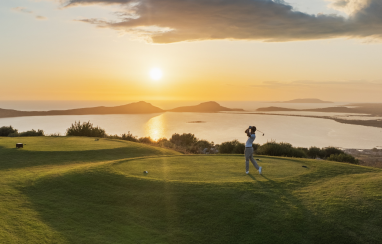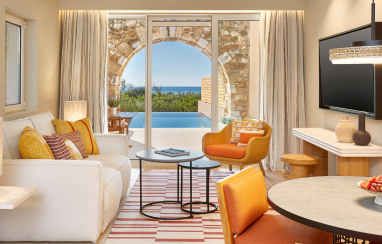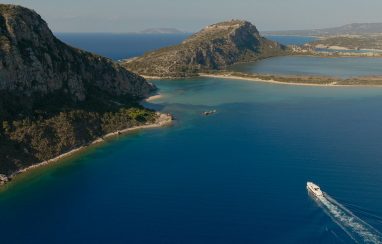By Xenia Georgiadou
Υoann Bourgeois is known for innovative, captivating choreography. In 2017, he created a mesmerizing performance piece at the iconic Pantheon in Paris. In 2018, he closed the 18th Biennale de la Danse in Lyon with a piece featuring 21 amateur performers. He choreographed the 2021 “Let Somebody Go” music video with Chris Martin of Coldplay and Selena Gomez, creating the illusion that they were floating through a world that was part video game, part Escher painting. In February of 2023, he was the artistic director of Harry Styles’ Grammy Awards performance. Bourgeois maintains ongoing collaborations with the Goteborg Opera and Nederlands Dans Theater.
The choreographer’s creative reach extends beyond dance; he’s worked with Tiffany & Co. and Apple for product promotions, and helmed the theatrical direction for the presentation of Louis Vuitton’s Men’s F/W 2022 collection.
A recurring theme in Bourgeois’ work is his grasp of physics – gravity, suspension, and centripetal force are integral elements in his performances. He says “I don’t approach physical phenomena as a physicist, but I find them incredibly exciting.” This unique perspective allows him to craft experiences that push the boundaries of traditional dance and performance.
Yoann Bourgeois was born in 1981. From a young age, he was drawn to the art of circus performance. “Circus is a way of living poetically,” he says. His work is rooted in circus acrobatics, which he studied alongside contemporary dance. From 2006 to 2010, he collaborated with the esteemed choreographer Maguy Marin. In 2010, he founded his own company, and in 2017, he became director of the National Choreographic Center of Grenoble, the first director with a background in circus arts. In his work, Bourgeois often blends various expressive forms – dance, music, theater, visual installations, and video – to explore human relationships, loneliness, defeat, and, most importantly, the human desire to rise, to fly, to defy gravity. At the International Dance Festival of Kalamata, Bourgeois will present “Approach 17. Opening,” inspired by the composition “Opening” from Philip Glass’s musical work “Glassworks.” In this piece, a man stands at the edge of a staircase, attempting to move forward but continually pulled down by gravity. He tries to climb the initial steps but falls repeatedly. Bourgeois describes it as a simplified representation of the existential trajectory, the perpetual struggle and resilience of the human spirit.
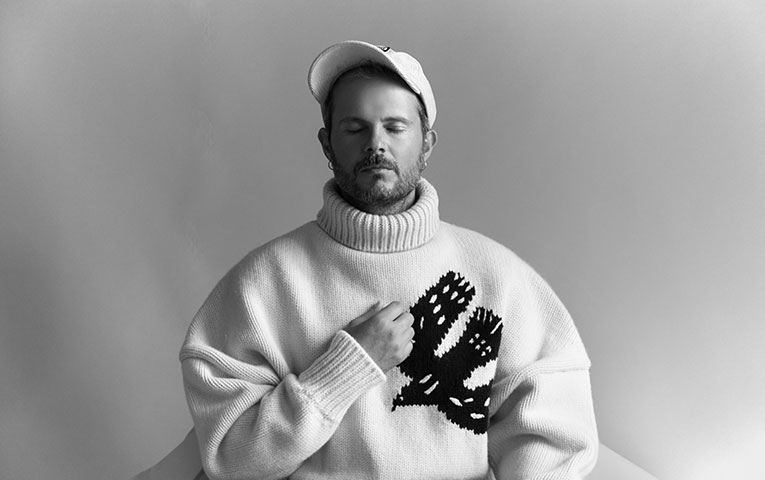
What do you think when you see a staircase?
Is the top really the top, and what is the bottom?
Why do you explore the concept of falling?
Because it is humanity’s greatest drama. If falling is serious, it is because it inevitably leads to immobility. So, I believe we must try to resist it… I resist it through my constant search for suspension. What I know to be most beautiful is without gravity.
To what extent does man accommodate the idea of gravity constantly pulling him down?
I don’t know. I think it’s a personal matter. We mostly do what we can. We grow old… My strategy has been to try to live poetically and to continue playing, to never let go of the child within me.
What importance does repetition have in our lives? You and your dancers repeat movements with small variations that reveal changes in mood, anxiety, despair, and solitude.
“Don’t change anything, so that everything will be different,” said Yasujiro Ozu. I try to capture the impermanence that permeates life, and for that, I create physical setups. I progress through variations to deepen a coherent and comprehensive work.
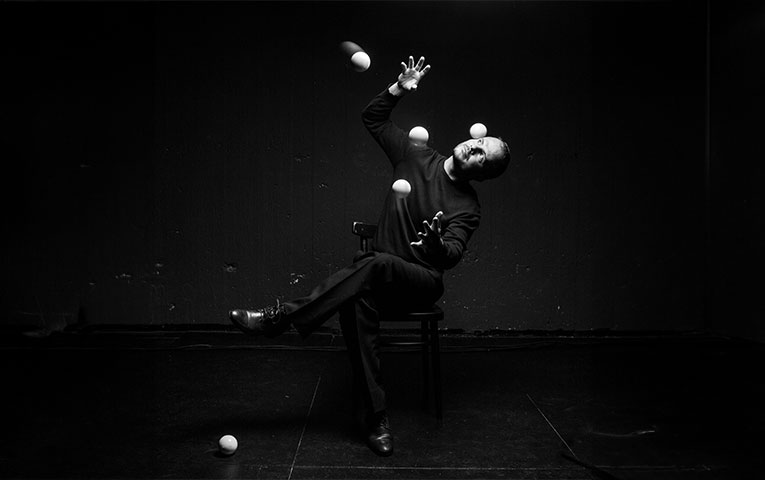
What role does musical choice play in your creations? Does the piece of music dictate a story?
I love working with music because it closely aligns with my vision of dramaturgy. A variation of intensities. It is a way to thwart narrative univocity and embrace a polysemy with a precise tone.
On the trampoline where you land, there is a cross. I think it comments on our final destination. Are your characters trying to escape death?
That cross on the canvas is just a technical marker! It has no significance! However, if my characters try to escape death, it’s through their repeated attempts to be present. Presence carries within it a breath of eternity.
What inspired you in the art of the circus? How did it all start?
It’s a long story… When I was a child, my parents separated and sold our house to the most beautiful circus, which has since closed down but was called the Cirque Plume. I didn’t know the circus world, but I wanted to join it. Maybe it was a way to stay connected to my childhood home. It also allowed me to not lose the child within me and to make “play” the center of my life. The circus was an ideal way of life for me, before being an artistic practice. A way to live poetically. From there, I understood that all disciplines could contribute to a nameless art, which is the most beautiful of all arts: the art of living.
Why do you love dance?
I love dance as much as I hate speeches and directives. I love dance because I don’t know how to speak. Dance begins where words end, inhabited by a desire for apolitical, universal communion.
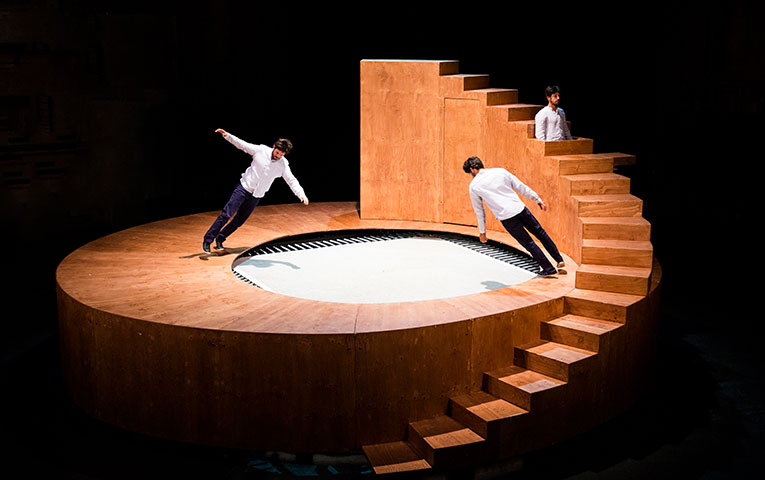
You and your dancers seem not to take strong, decisive steps, as if you were walking on tiptoe, as if you were floating, sometimes stumbling. Why?
Because our punctual intentions do not surpass our doubt.
You recently created a work for NDT 1. Is it easy to work with groups unfamiliar with your methods?
It’s not easy, and that’s the whole point. Meaning often comes in friction. I believe we need to seek out our border areas to push back our old confinements.
When we say someone takes risks and lives dangerously, we say they walk a tightrope. Do you connect your art to danger?
Art is always connected to risk-taking, to putting oneself in danger, because art always, in some way, dialogues with death. Paradoxically, without this relationship, there would be no vitality.
INFO
YOANN BOURGEOIS ART COMPANY – APPROACH 17.
OPENING: 12.07 Kalamata Central Square. 13.07 Tripoli, Petrinou Square. 14.07 Pylos, Trion Navarchon Square. 15.07 Nafplio, Syntagma Square. All shows include three performances each, at 19:30, 20:30 and 21:30.
